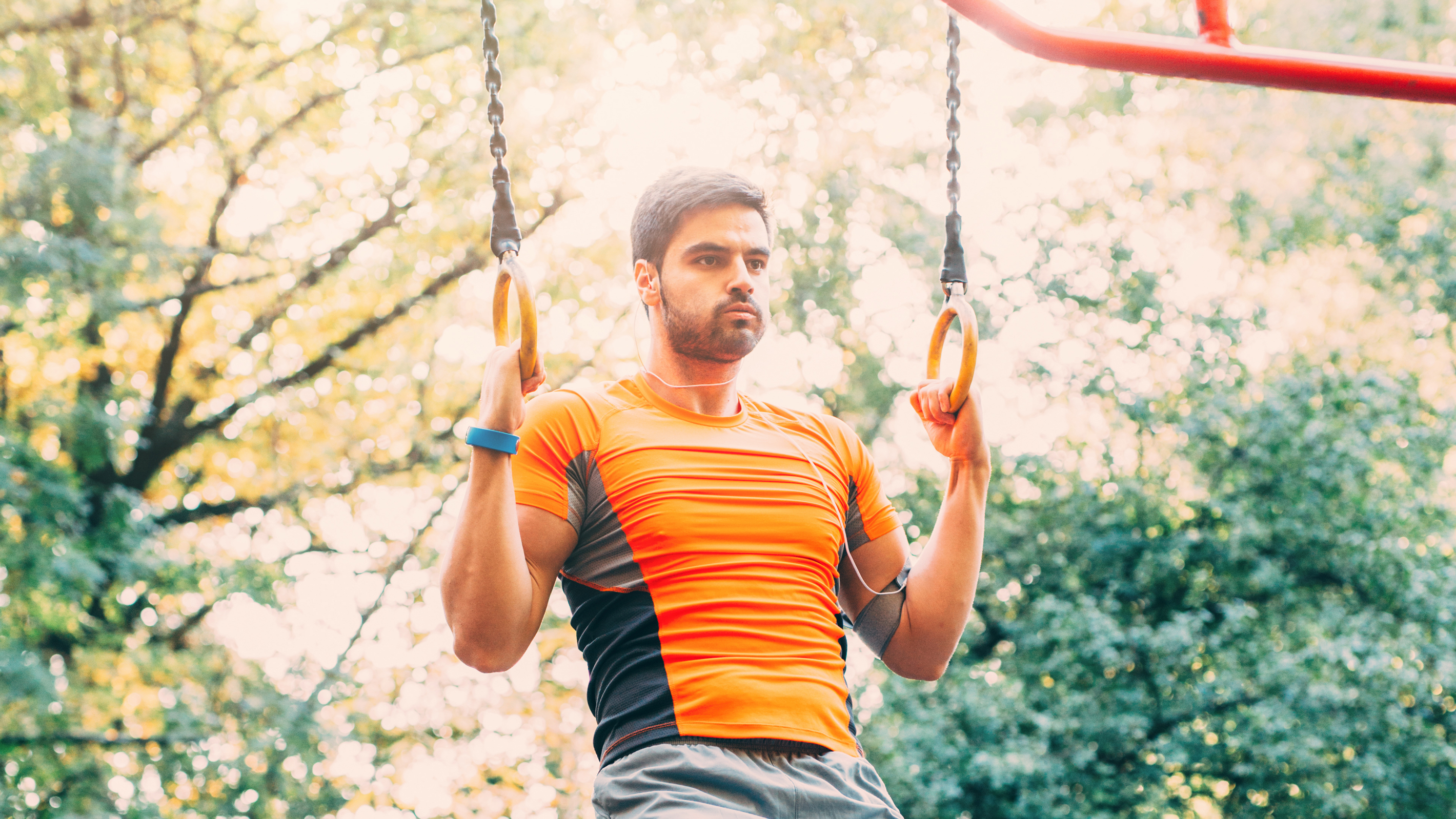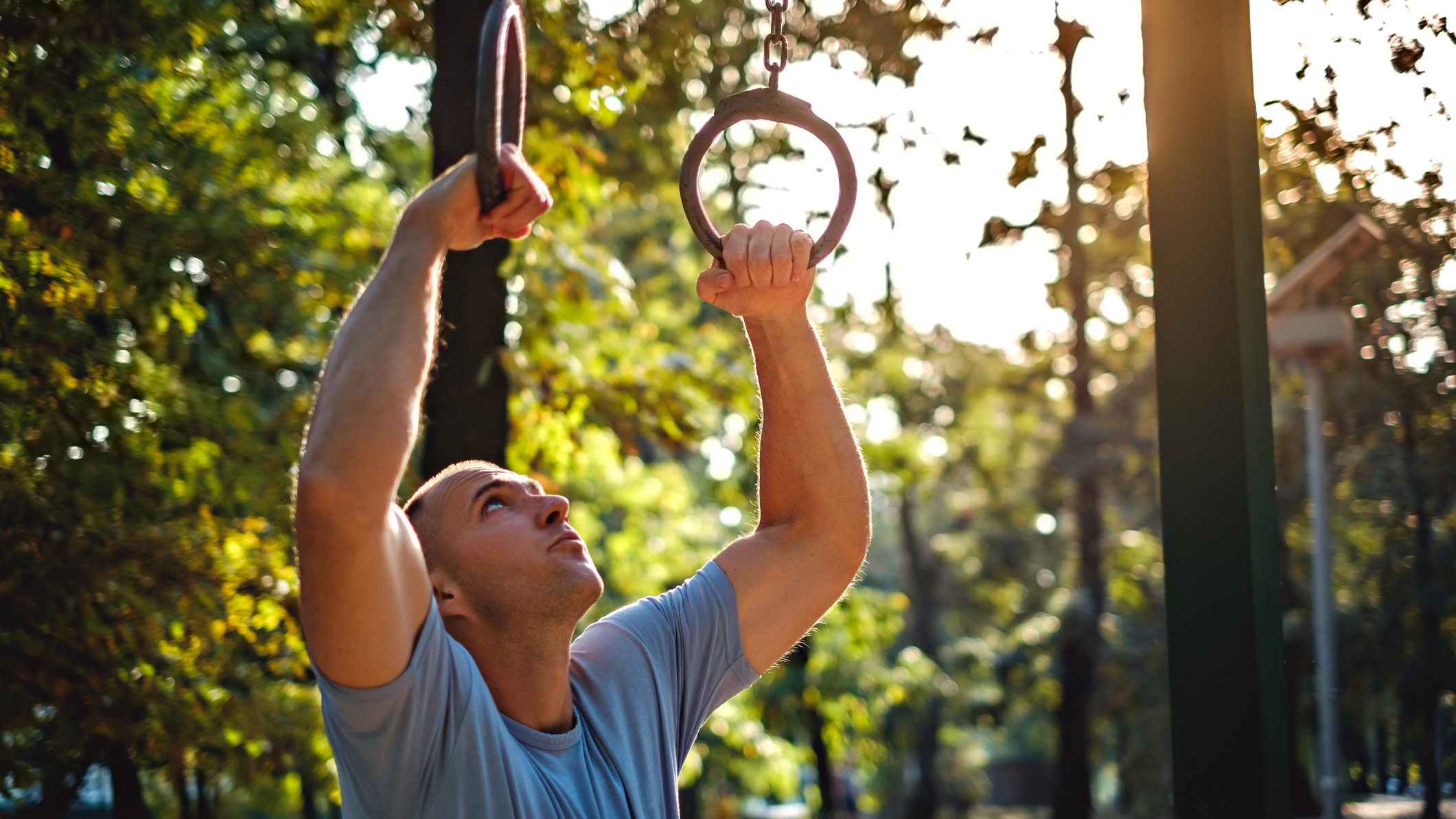"How I learned to do a set of 10 pull-ups during lockdown – and so can you"
Our writer learned to do his first ever set of 10 pull-ups in lockdown this year. Here's how he got on


Lockdown has left many of us feeling imprisoned in our own homes. Restrictions change rapidly, with many countries and regions facing tighter measures than others in a bit to wrestle the pandemic under control. Many gyms, bars, restaurants and non-essential facilities closed this year, some for good. As some of us have shifted to working from home, we're still spending more time than ever in the same two or three rooms.
However, what do people do to pass the time in prison? They work out. Whether you're using the best rowing machine to work up a sweat or the best adjustable dumbbells to get stronger, there's a reason home fitness has seen a boom during the pandemic.
- How to do pull-ups and dips: Your ultimate calisthenics guide
I have always been an active person and a keen runner, but my upper-body strength has often felt lacking. I've been on several muscle-building training programmes in the past, and they usually end up abandoned after a lack of results (or just plain laziness) leads me to give up. I enjoy exercise, especially outdoors, but I'm not a huge "gym person" and can't seem to stick to a regular weights regime.
One sign of strength, which I'd always wanted to accomplish, was a set of 10 pull-ups. So in July 2020, I set myself the challenge of achieving that goal.
10 pull-up challenge: The tools I used
There's no dedicated outdoor gym near where I live, and the nearest monkeybars had been roped off to prevent kids playing together and spreading the virus. However, I still wanted an excuse to get outdoors, so I opted to pick up a set of the best resistance bands and a set of gymnastics rings from Amazon.
PELLOR Olympic Gym Rings 28mm | was £39.96 | now £34.95 from Amazon
Grab these wooden rings with strong webbing straps and an adjustable fasten, so you can switch up the length of the suspension trainer to perform all kinds of moves. It's a home gym in a bag.
I live round the corner from a park and one of the bigger trees has a thick, perfectly horizontal limb, serendipitously placed about eight feet off the ground. I was able to loop the straps for the rings around this branch, creating a perfect pull-up station.
Doing pull-ups on rings can actually be harder than attempting it on a bar, due to the instability of the straps. It's a bit like using dumbbells instead of a barbell: because each arm is now on its own, you're able to push, pull or curl less weight than you can holding a device that joins them together.
Start your week with achievable workout ideas, health tips and wellbeing advice in your inbox.
However, rings are an extremely versatile bit of kit (even more so than a bar) allowing you to perform lots of different workouts. You can adjust the length of the strap and rotate the ring for exercises like rows, chin-ups, advanced gymnastics moves and the always-wobbly-feeling ring push-ups and dips.
Resistance bands are equally versatile. Using bands of different thickness, another tree and a broom handle, I was able to do curls, bent-over rows, lateral pulldowns and even deadlifts, all in my local park. After doing rings and bands workouts for the last six months, it's touch-and-go whether I'll ever go back to the weights room in the gym.

10 pull-up challenge: The method
To start with, I thought I'd see what I had to work with. I tried my first set of strict pull-ups on the rings, with both my palms facing forward, away from my body, and couldn't get two reps out. The rings would wobble violently, throwing me off balance, and I didn't have the strength to get the suspension trainer to fall in line with what my body was telling it to do. A total failure.
My first few weeks were spent using resistance bands to build up a bit of strength. I would do exercises like bent-over rows and resistance band curls, standing on one end of the band and curling or pulling the band up towards my body with my hands. I also looped the bands over a tree and performed lateral pull-downs, as if I was on one of the machines at the gym. The aim was to strengthen my back and biceps, as these were the muscles that would be engaged in the pull-up.
At the end of each strength workout, I did crunches and planks to tone my core. The trunk of your body is instrumental in any dynamic exercise, and a strong core helps hold your body in a 'hollow' position while performing pull-ups.
- Best back workout: build a stronger back and improve your posture
After a few weeks of this, I returned to the rings with a strategy. I started each pull-up with my palms facing forwards and turned the rings 90 degrees on the way up, ending the move in a "neutral" pull-up position. I would then lower myself down, turning my hands back to the original position, as per the video below.
Keeping your palms forward (a "strict" pull-up) is the hardest way to do the move because you're recruiting more muscles in your back, and less muscles in your arms. The chin-up, where your palms face towards you, is the easiest variation, while a neutral grip (palms facing each other) is a balance between the two.
I opted to start in palms-forward position because when I eventually get on an actual bar again, I wanted to be able to do more "strict" pull-ups and recruit more of the muscles in my back.
After consulting a personal trainer friend, my standard park workout looked a lot like this:
- Warm up: Sprints, jumping jacks, shadowboxing and stretches
- Pull-ups, to failure x3: The first set consisted of as many reps as I could do. If I could do six before I failed, I would try for a set of five on the second set, and a set of four on the third.
- Negative pull-ups, 5 reps x3: I would jump off the ground into pull-up position, hold it, then slowly lower myself down for a count of five.
- Hanging knee raises, 6 reps x3: Making sure to engage my back muscles, I would hang onto the rings while raising my knees up to chest height, lowering them slowly under control.
- Rows, 8 reps x3: I would lengthen the straps, stand on the floor, lean back and pull into my chest. I sometimes replaced these with "assisted pull-ups" in which I would lengthen the straps slightly and perform a pull-up while balancing on my heels.
10 pull-up challenge: The results
Progress initially came pretty quickly thanks to my regular regime and "newbie gains". I was breaking the challenge up with my usual runs, but I was performing this routine around twice a week, or once every five days. In September, I was hitting a max set of seven pull-ups very consistently, and I was confident I would be able to hit my goal of 10 pull-ups soon.
However, as winter came on, so did the bad weather, the risk factor of all outdoor workouts. I exercised, but not as much as I'd have liked to, and pull-up number nine proved a real sticking point for me.
One day in the middle of November, disaster struck. I was feeling quite morose due to my area being plunged back into lockdown, and I decided to cheer myself up. Today, I told myself, would be the day I hit my 10-pull-up goal. Unfortunately, every third or fourth pull, the fastening on one of the rings was slipping. It eventually gave way completely, and I collapsed into the mud below me. It turned out a little piece of bark from the tree had stuck into the teeth of the fastening, and by the time I figured it out, I no longer had the energy to go for the title.
It took a week to pick the rings back up again. This time, I decided, there would be no pressure on whether I would hit my goal that day. I was fitter and stronger than I'd been in years, so regardless if I could hit 10, nine or eight pull-ups on my first set, I would put on some music, just go out there and enjoy the fresh air. Of course, it was that day, the day before my birthday, that I finally hit my 10 pull-up challenge goal.
Liked this?
- "I took the cold shower challenge for a week and it changed my life"
- 'I ran 5k every day for a month and this is what happened'
Matt Evans is an experienced health and fitness journalist and is currently Fitness and Wellbeing Editor at TechRadar, covering all things exercise and nutrition on Fit&Well's tech-focused sister site. Matt originally discovered exercise through martial arts: he holds a black belt in Karate and remains a keen runner, gym-goer, and infrequent yogi. His top fitness tip? Stretch.

